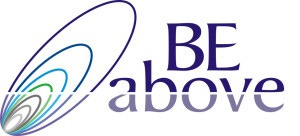Hetty Brand-Boswijk has worked at Erasmus University’s Rotterdam School of Management for more than 30 years, and since adding “coach” to her resume in 2013, she has worked hard to advocate for a coaching component to the school’s MBA program. Since completing BEabove’s Advanced Coach Training, Certification, and Train the Trainer in 2018, she has also layered her neuroscience training into the program, making it the only university (that we know of!) using this material in an academic setting.
In her interview, Hetty describes the big impact this material has had on students individually, as well as the way its integration into the curriculum has influenced the program as a whole.
Tell us a bit about your work.
I am the Director of Coaching in the Rotterdam School of Management (RSM) at Erasmus University. As an academic organization, my clients are predominately MBA clients, folks in mid-career who are in their jobs and also participating in this program (we call them “clients” because they are coaching clients, even though they are also students).
There are many head offices of global companies located in the Netherlands, so our school attracts executives who are looking for continued education. They receive mandatory team coaching in their cohorts as well as individual coaching.
I manage the network of external coaches that we bring in to facilitate the team coaching, and I also teach “The Leader as Coach” course here. This course introduces them to the foundation of coaching, how can they use it within their organizations, how to practice it, how to ask powerful questions, etc.
When did your training with BEabove take place? How long have you been using it in your work?
I call myself a BEabove evangelist – I’ve done it all! I completed their Advanced Coach Training in 2017 in Norway, followed by the certification training in spring 2018. Later that year I did Train the Trainer as well because I knew I wanted to bring this work into RSM in the form of a course. If I’m going to do something, I’m going to do it completely!
I came pretty late to coach training – I started in 2013 with CTI but when I did it I discovered I was a born coach. I had worked at RSM for more than 25 years at that point and happily, they were open to having me integrate coaching into the MBA program. So at this point I’ve been using my BEabove training for about 3 years in my work.
What drew you the BEabove training?
When I started coaching and learned how to go in depth, I discovered that my sweet spot is being with big emotions. As I was moving through my coaching sessions I would watch my coachees shift in their seats or start to cry. Every time that happened I was like, “What is going on?” I was curious about what was happening in their body and their brain.
I believe I learned about BEabove through CTI, and when I went to the BEabove website, I thought, “Yes! This is the knowledge I want to have.” I wanted a deeper understanding of the transformations that were taking place in my clients’ brains and bodies so I could have language around it. BEabove has given me that and so much more.
One thing that’s also been very important to me is experiential learning and that’s a big value at BEabove.
What is the unique way that you are using neuroscience, NCTC work?
I don’t know anyone else in my environment (academia) who is as passionate about this neuroscience and coaching thing as I am. So I’d say the most unique way I’m using this material is in a university setting.
What the Advanced Coaching Training and Train the Trainer have brought me most is an understanding of the human condition because at the end of the day my job is working with humans. In my context, when I’m working with middle and senior managers who are living their lives not as who they are, but as the world thinks they should be, they are ripe for breakthroughs. They are the ones asking, “Is this it?” and they’re the best ones to work with because they are so open to change.
It’s very rewarding when these breakthroughs happen and it’s great to be able to share this learning with a kind of client – i.e. an MBA student – who wouldn’t normally have access to it.
What has been the organizational impact? What has been the individual impact on clients?
I’ve observed my coaches use this material with the MBA students and I’ve seen the changes. We tell them about neuroplasticity, about the TPN and DMN, and they light up. Once they understand the seesaw, they almost automatically start to integrate ATL and BTL, right and left hemisphere, and the chemical balance starts to happen in their brain.
The coaching has had a big impact organizationally because it’s embedded in the MBA programs now, so every graduate will have interacted with the material. I really believe we are changing the world one student at a time.
How has this learning enabled you to go to places you would have otherwise been unable to go?
The question for me would be, “How has this made it possible for you to go places as someone you would otherwise might not have been?”
I’ve always done theater. Give me a stage and I’m happy. However, the person who was on stage a few weeks ago at a keynote conference is a different person to the one who would have been up there 5 or 10 years ago. I would have been authentic, sure, but I would not have been confident.
I’ve spent years being who I thought the world wanted me to be. Now I have so much more peace and inner calm about who I am – inner gratitude for everything that I have and everything that I am. That is something I’ve discovered about myself in the past 5 years and this journey with BEabove has been a big part of that.
It has enhanced my empathy, compassion and balance, and taught me how to say no, how to make choices. I’ve learned how important my physical balance is to my mental health. It’s given me a different kind of courage – no it’s not courage, it’s kickassness. I now understand what’s going in people’s brains and I feel far more credible sharing what I know.
The community of people around BEabove is a kickass group who aren’t just interested in moving forward at any cost, but interested in understanding the human condition. At the end of the day, my job is working with humans, and the BEabove material is informing me on how humans work and what the people I work with are going through.

